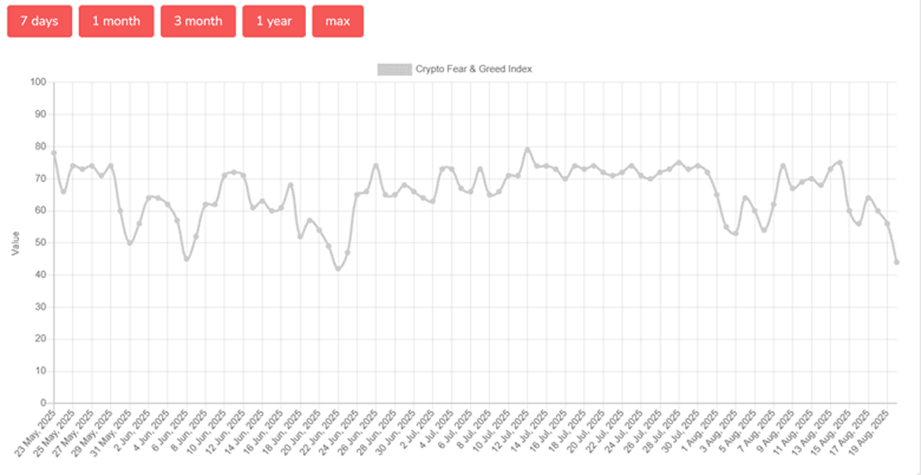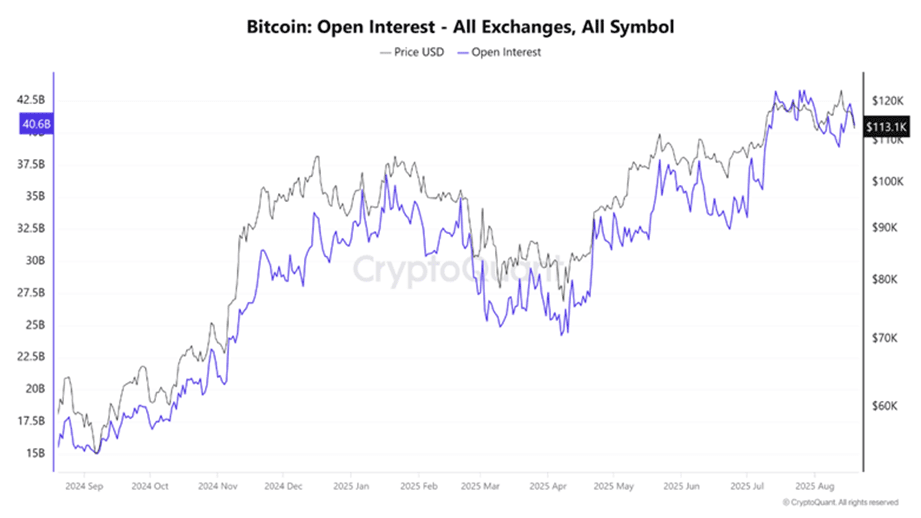The price of Bitcoin has dropped to a low of $112,580 in the past 24 hours, which means it has wiped out all the gains achieved in the first half of August.
This is quite a surprising development, as just last week, Bitcoin hit a new all-time high (ATH) of over $124,500 on Thursday. At the time of writing, the price of BTC has dropped nearly 10% from its recent peak. However, what is even more notable is the series of factors contributing to this decline.
In recent times, investors have placed high expectations on the Federal Reserve's (Fed) ability to cut interest rates, which inherently benefits risky assets like Bitcoin. The probability of an interest rate cut in September has increased from last week, but still depends on the economic data released this week. The persistent inflation situation weakens the prospect of a cut.
Previous reports also revealed that the 2024 employment market data has been overstated. With the reliability of the employment figures being controversial, the latest report shows that the unemployment rate has reached 4.7%, the highest in four years.
Typically, Bitcoin is not very sensitive to such economic data. However, due to just reaching a new ATH, the market often experiences strong profit-taking pressure. Therefore, BTC becomes more volatile in the face of significant news.
Notably, the fear and greed index has dropped to the fear zone for the first time since June.

High speculative conditions and large leverage make Bitcoin more volatile.
If you have been monitoring market data over the past two weeks, you may have noticed that open interest (OI) and funding rates are increasing. This situation is not only occurring with Bitcoin but also with several other leading cryptocurrencies.
The increase in OI indicates a growing demand for leveraged positions. Meanwhile, the number of liquidation orders has also surged in the past two weeks, which may have contributed to stronger price fluctuations for Bitcoin.

It's not surprising that leveraged Long positions have suffered heavy losses this week. Especially in the past two days, the total number of Long orders liquidated has exceeded $228 million.
This development follows a sharp reversal in Bitcoin's price since Sunday, right when the bullish expectations were still high.
ETFs increase selling pressure.
Previously, Bitcoin ETFs contributed to boosting optimism in the first half of the month. However, this week, even ETFs are shifting towards distribution.
On Tuesday alone, Bitcoin ETFs recorded outflows of up to $523.3 million, the second-largest amount this month, just after the strong capital withdrawal on August 1.
Selling pressure from institutions has significantly contributed to the decline in market sentiment, shifting to a state of fear.
The price of Bitcoin seems to have found a short-term support level around $112,500. However, deeper downside risks still exist if the market continues to experience a liquidity sweep around this support area.
The probability for such a scenario is assessed quite high, especially in the context of a series of important economic data to be released this week, including the S&P Global manufacturing PMI on Thursday.
Additionally, the market is particularly awaiting the speech of Fed Chair Jerome Powell at the annual Jackson Hole conference. This speech could determine market sentiment for the next 2-3 months.
In other words, this week's economic data continues to play a crucial role in the change of market sentiment. This is a sign that investors are becoming more cautious, preparing for the possibility of significant volatility.
Although the downside risks for Bitcoin remain, investors are also closely monitoring accumulation opportunities. In recent corrections, the market often recorded strong buying power at discounted price levels, leading to rapid recoveries.